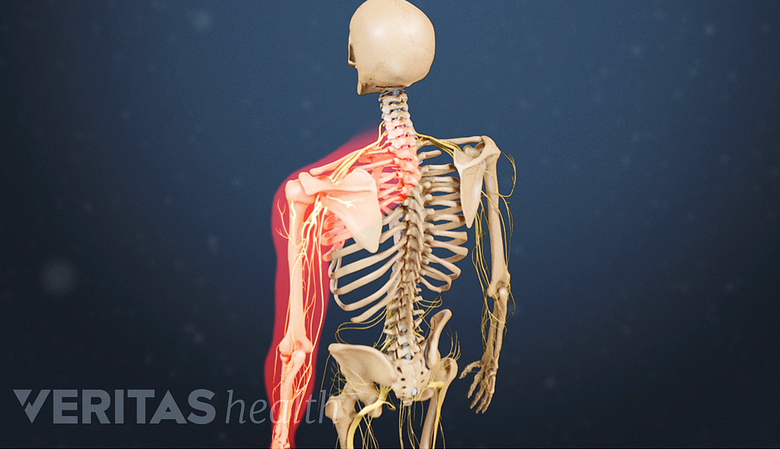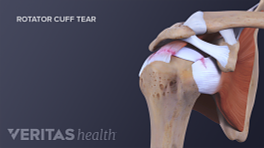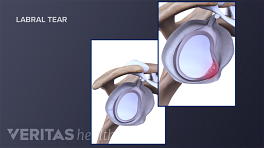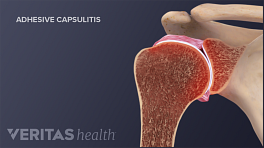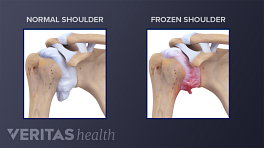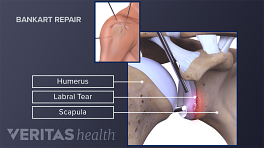Shoulder dislocations usually occur after a traumatic event, such as a direct hit to the shoulder or a fall.
Shoulder dislocation can cause numbness and weakness in the arm, hand, neck, or fingers.
In This Article:
These symptoms are commonly associated with shoulder dislocations:
- Sensation of the shoulder “popping” or “rolling” out of place at the time of occurrence, followed by the appearance of deformity in the shoulder. The shoulders may not look symmetrical, and the bulge of the humeral head may be visible beneath the skin next to the shoulder for slimmer individuals.
- Acute, severe pain is felt immediately when the dislocation occurs. Pain may be felt in the upper arm and shoulder. Pain may be aggravated by movement, if movement is still possible.
- Muscle spasms in the shoulder can occur following a dislocation—this can add to the pain. Muscle spasms also can make it difficult to return the dislocated humeral head to its normal position. For this reason, physicians may provide medication to relax the patient’s muscles before restoring the shoulder into position.
- Decrease in shoulder mobility may be experienced after a dislocation. In fact, movement may not be possible at all. Even if movement is possible, it may not be recommended because nearby nerves, tissues, and/or blood vessels could be damaged.
- Numbness and weakness may be felt in the arm, hand, neck, and/or the fingers. Some patients describe having a “pins and needles” feeling.
- Bruising and swelling in the shoulder and upper arm, which develops shortly after the injury occurs.
A medical professional usually needs to help put the shoulder back into its place. If a shoulder dislocation is suspected, the patient should seek medical treatment.
Shoulder Subluxation and Shoulder Instability
Sometimes the humeral head does not come out of the socket completely, or it may slide back into place without assistance. This is called a subluxation, or a partial dislocation.
Subluxations are also usually due to acute trauma. When these occur, there is commonly a temporary “dead arm” sensation in the affected arm. Subluxations can also cause pain and limited range of motion. This condition does not require a trip to the emergency room, but medical attention should be sought because of the risk of recurrence.
Physical therapy for subluxations and shoulder instability can ease symptoms and help to strengthen and stabilize the shoulder. In some cases with recurrent episodes, surgery may become necessary.
